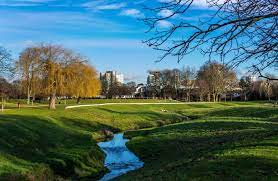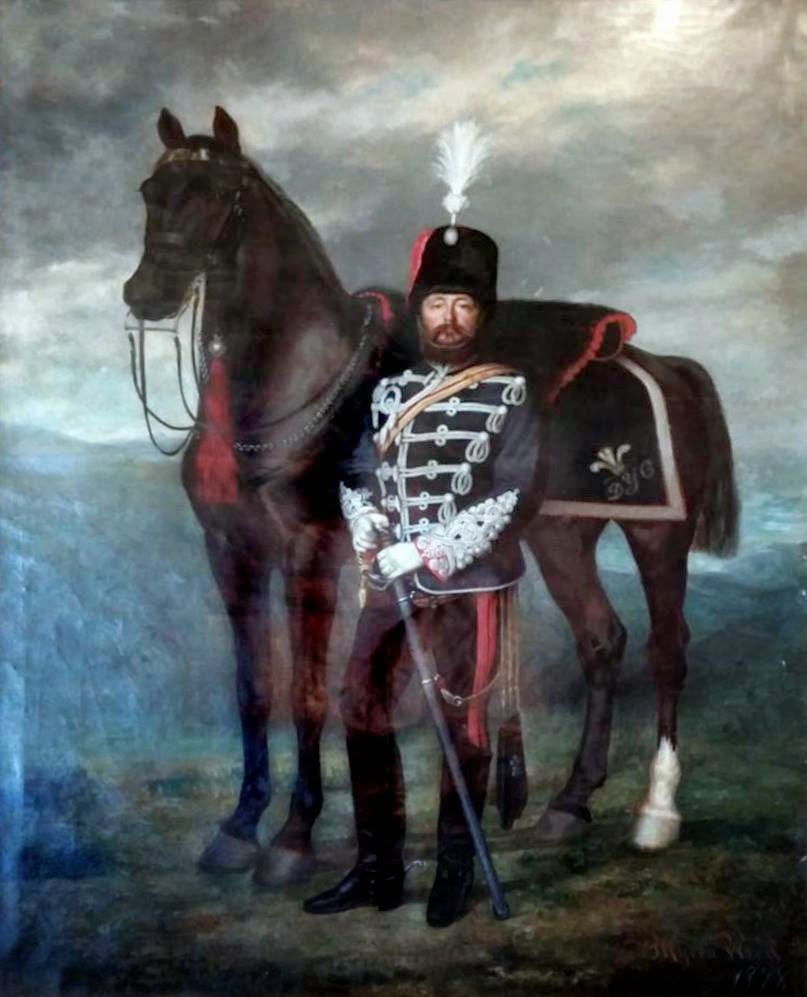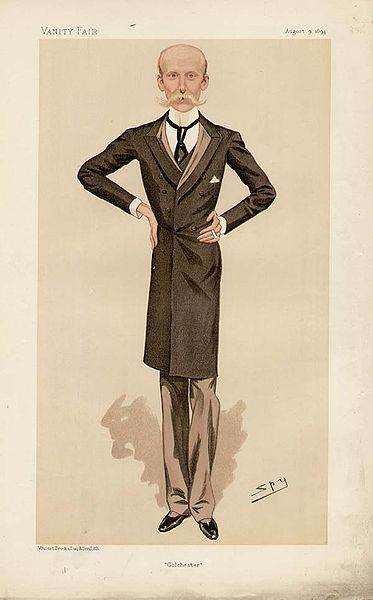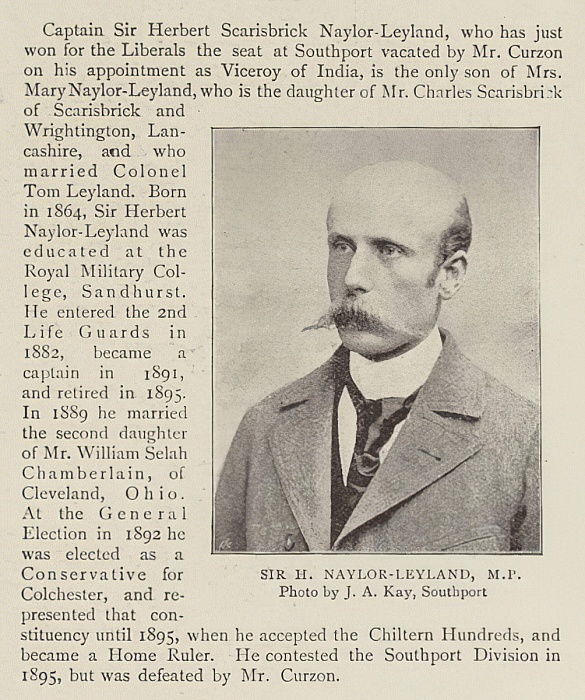Introduction
In this edition we hold out some prospects for future face-to-face meetings, while at the same time maintaining the online links that have kept us alive as an organisation in the last year. If it is to be ‘business as usual’ from September onwards, the underpinning administrative structure will be endorsed at our proposed AGM in July. The following items give details of our plans.
Recently we invited members to express interest in joining the committee, and we are delighted to report the addition of three new members: Margaret Boneham, Mary Ormsby and Christine Vasey. This both makes the committee more representative and gives us a wider range of expertise to call on. Welcome to these new members!
We present an item by one of our members, Nancy Lloyd-Parry, who speculates on the relevance of Tennyson’s poem, ‘Ulysses’. If you have a copy of the poem, you might find it helpful to have it beside you as you read Nancy’s article. However, we have provided a transcript of the poem for those who have not got a copy: this is on a separate page at the very end of this edition. The second article is the third part of an exhaustive and authoritative study of a local family, the Scarisbricks. Mary Ormsby has worked with Roger Mitchell in putting this together.
We will need to discuss the future of this FORUM in the event of a return to more normal routines, but members’ contributions are still welcome.
Gazing into Space
When Galileo looked through his telescope, he observed the planets in more detail than ever before, and he was able to reach the important conclusion that they circled the sun. This was astonishing enough in his day, but how would he react to the development of his simple telescope into the mirrors on the Hubble and the vastly expanded view of the universe we now have? No less astonished than the members of SUES who had the intricacies of the modern telescope explained to them so clearly, and who were able to enjoy a selection of the remarkable images which it has revealed. Tony Bell is an expert in this field, and in his talk on Friday 14th May he succeeded in making the wonders of modern astronomy accessible to the non-specialist, as well as satisfying the scientists among us. He focused on the Hubble telescope and showed how this remarkable structure works. Our minds are still reeling from the implications of the speed of light and distances measured in billions and trillions; but we have at least a grasp of what modern technology can do in giving us a sense of the enormous dimensions of the universe, not to mention its beauties and mysteries. We are very grateful to Tony for what turned out to be another memorable occasion in our programme of lectures.
John Sharp
Future Programme
We have two events planned for the summer and we hope to resume our normal programme at All Saints’ Church Hall in September.
Friday 18th June at 2.30pm – Alan’s Lichen Walk in Victoria Park. This will be the Society’s first live gathering for more than a year. Further details are given below.
Friday 23rd July at 2.30pm at All Saints’ Church Hall (Large Room) for AGM and More. This will be our first indoor gathering since the pandemic and we want it to be both safe and enjoyable. We will have plenty of space and plenty of ventilation. The AGM will take place first and should not last more than 15 minutes. It will be followed by tea and scones and then contributions from members on the theme of ‘The Positives of 2020 – 2021’. We hope that as many members as possible will contribute telling us about such things as new hobbies, successful recipes, favourite books or poems, maintaining contacts etc. Full details will appear in the June edition of Forum and papers for the AGM will be included in the July edition.
Programme from September onwards
Friday Afternoon Talks/Lectures. We hope that there will be two between September and December and two more between January and April. Speakers will include both members and visiting lecturers from University of Liverpool Continuing Education. Topics will be drawn from a wide area: literature, science and history.
Monday Morning Courses. These courses will run from 10am to 12noon with a break for refreshments. Peter Firth’s course on Norman Monarchs (Queens as well as Kings) will have 10 sessions between September and December. Roger Mitchell’s course on The Country House in 20th Century will have 8 sessions between January and March. Alan Potter’s course on The Human Brain will have between 6 and 8 sessions in April and May.
Dates and Fees will be confirmed at the AGM in July.
A Walk with Lichens
Alan Potter
In Victoria Park, Southport Friday 18th June 2021 2.30 pm to 3.30 pm

This event is an opportunity for members of SUES to come together in person for the first time since the start of the pandemic. It is a follow up to the lecture on lichens earlier in the year, which aroused curiosity and provoked interest in these complex and unique living organisms in their various forms.
By examining different types of lichen and the conditions in which they thrive in situ, we will begin better to understand them and the way they interact with the environment. Field guides will be provided to help to identify, compare and contrast various species, and the walk will be on level ground. Explanations about how to investigate and catalogue lichens will be suggested to help members to enjoy investigating lichens both on the day and into the future.
As usual, at SUES meetings, there will be an opportunity for refreshments and socialising, perhaps as a picnic, if the weather is good.
Members are asked to let Alan Potter (alanspotter@hotmail.com) know in advance if they wish to attend in order to aid organisation. Further details of the event will be provided nearer the date to those registered, which will take into account the number of members involved and the weather forecast.
I cannot rest from travel
(The text of Tennyson’s poem can be found at the end of this edition.)
Roger’s interesting course on Travellers introduced us to some remarkable characters from differing backgrounds and spheres of travel. The one thing that they seemed to have in common was an insatiable desire to explore and to endure discomfort and danger in the quest for discovering something new that can be recorded and reflected upon in later years.
Tennyson’s dramatic monologue ‘Ulysses’ presents the viewpoint of a renowned traveller and hero who finds that he cannot settle down to the job of ruling a kingdom. He wants to hand over the throne to his son, but not to enjoy an easy retirement. He determines to gather his old crew mates together and set off on one last voyage. In 1833 when the poem was written Tennyson was twenty-three years old. He had enjoyed travelling in Europe with his Cambridge friend Arthur Hallam who was engaged to his sister Emily. It was a terrible shock to hear that Arthur had died suddenly in Vienna. Tennyson was stricken with grief. He was at the time living in the rectory in Somersby Lincolnshire after the death of his father the late vicar. He was looking after his widowed mother and seven of his brothers and sisters. It must have seemed as if his travelling days were over for ever. Yet he has convincingly created the viewpoint of someone aware that he is growing old and that time is precious.
This Ulysses is unhappy in his current job as king of Ithaca. Penelope, who waited patiently for him to return from his travels and kept suitors at bay by promising to choose one when she had finished the tapestry which she unpicked each night, is spoken of disparagingly: ‘Matched with an aged wife’. He thinks nostalgically of the times spent on travel and in war ‘Far on the ringing plains of windy Troy’. He does not recall the horrors of war but the excitement.
It is not merely the physical discoveries that he enjoys about travel but the intellectual challenge of learning new things and pushing the boundaries:
‘And this gray spirit yearning with desire To follow knowledge like a sinking star Beyond the utmost bound of human thought’.
In the vivid last section of the poem we are down at the quayside and Ulysses addresses his mariners, his friends who have shared hardships and thrills with him. He is not pretending that nothing has changed:
‘You and I are old’.
The outcome of the voyage is uncertain and he does not plan to return but he urges them to seek a newer world, whatever the cost.
I find it an inspiring poem because it says that all experience is valuable and it is never too late to start again and learn and discover something new. Lockdown has brought challenges for us all but we can discover new worlds of the intellect and imagination even if we cannot physically set sail:
‘We are not now that strength which in old days
Moved earth and heaven, that which we are, we are;
One equal temper of heroic hearts,
Made weak by time and fate but strong in will
To strive, to seek, to find and not to yield.’
What will you discover in your next voyage?
Nancy Lloyd-Parry
Mary Ann Scarisbrick and Her Descendants
(This is the final part of Mary Ormsby’s history of the Scarisbrick Family. She and Roger Mitchell have collaborated on this section.)
Born in December 1841, Mary Ann was the youngest of Charles’ children and we know little of her early life, even less about her character and nothing at all about her appearance. Census returns tell us that in 1851, she was living at 15, York Buildings, Hastings with her mother, her mother’s sister and her brother Charles. In the 1861 census, she is listed as a visitor at a much more prestigious address, 3 Albert Gate, Knightsbridge, also known as Hyde Park House and described by The Survey of London as being built ‘on a truly palatial scale’. By the tender age of 19, Mary Ann had already achieved a place in English Society that neither of her brothers could match. Hyde Park House belonged to Captain Tom Leyland (born Naylor) and had been completed only three years previously. On the 25th March 1862, Captain Tom was to become Mary Ann’s father in law when she married his only son, Tom Naylor Leyland at the British Embassy in Paris. Both bride and groom were a few months short of their twenty first birthdays.
The Naylor Leylands were rich and landed, but their wealth was new not old. It had been acquired in Liverpool by Thomas Leyland (1752 – 1827) and came from trade (including trade in slaves) and later from banking. Thomas had no children and his fortune passed via two unmarried brothers to three nephews of whom ‘Captain Tom’ was the eldest. He owned the Haggerston estate near Beale in Northumberland and his brothers had landed estates in Cheshire, Shropshire, Denbighshire and Northamptonshire.
The Naylor Leylands are sometimes described as a clan and, unlike the Scarisbricks, they seem to have been on good terms with each other. They may also have been on good terms with Charles Scarisbrick and perhaps he had business with them. This is no more than speculation but it might help to explain Mary Anne’s presence at Tom’s London House in 1861 and marriage to Tom’s only son in 1862. This took place only two years after Charles’ death and it is not impossible that the marriage was planned by the bride’s father while she was still a child. There was much to be said in its favour by both families. Mary Anne would enter a rich and socially ambitious family with their roots and a good deal of their money in Liverpool. Concerns about her illegitimacy would be at an end and, of course, her guaranteed annual income of £3,000 that had risen to £10,000 by the 1870s would be very welcome. She was marrying the only son of the head of the family.
Little is known about Tom and Mary Anne’s marriage. Tom had a military career, first in the regular army (2nd Life Guards) and then with the Denbighshire Yeomanry Cavalry. He joined them as a Captain in 1862, taking over from his uncle, Richard Christopher Naylor, and from 1874 to his death in 1886 he was commanding officer with the rank of Lieutenant Colonel. He is shown in this portrait from the Royal Welch Fusiliers website.

The Yeomanry Cavalry were a volunteer unit but Tom seems to have taken his role seriously and must have spent a good deal of time in Denbighshire, living at Nantclwyd, which still belonged to his uncle, Richard Christopher.
Whether Tom and Mary Ann were happy together is not clear but the marriage produced a daughter and a son. It was their son, Herbert Scarisbrick Naylor Leyland, who was partly responsible for his father’s early and accidental death. Tom Naylor Leyland died on the 26th August 1886, having been accidentally shot by his son Herbert, in Scotland. He was killed by the accidental discharge of a gun while stalking on Stathraich Moor near Garve in Ross-shire. He had shot one stag and seeing another within range asked his son to hand him his rifle. When he was in the act of seizing the gun, it went off – the ball struck him behind the ear completely shattering the side of his head. Death was instantaneous.
Mary Ann’s 24 years of marriage were at an end and she seems to have spent her 16 years of widowhood quietly at Nantclwyd. She died on 15th June 1902 by which time her daughter was estranged and her son was dead.
Herbert Scarisbrick Naylor Leyland was born in 1864 and died in 1899 at the age of 35. His life was short but not without incident. Perhaps the best way of introducing him is via the ‘Spy’ cartoon published in Vanity Fair on 9th August 1894. The engraving is entitled ‘Colchester’, which was the parliamentary constituency that he represented, and he is listed as Statesman No 639 ‘Captain Herbert Scarisbrick Naylor Leyland MP’. A tall, slim, elegant figure with cigarette in hand, the most memorable features of the portrait are the moustaches. They look too good to be true but their accuracy is confirmed by the contemporary photograph also shown on the next page, which includes a brief account of his life.


The dates and facts in this brief biography are correct, but they do not tell the full story. Herbert was rich and ambitious but to describe him as a ‘Statesman’ is to stretch credulity. According to The Times (December 1886), he inherited personal estate worth ‘upwards of £241,000’ from his father and, when his grandfather died in 1891, he inherited Hyde Park House, one of the grandest houses in London. In 1889 he had married Jane Jeannie Willson Chamberlain, a wealthy American, who had entered English Society a few years previously and whose younger sister later married Sir Thomas Talbot Scarisbrick. She was described as the most beautiful woman in London and was a particular friend of the Prince of Wales. This was the circle in which Herbert moved and both his sons born in 1890 and 1892 had future Kings, Edward VII or George V, as godfather.
In 1892, he was elected Conservative MP for Colchester but within three years he resigned his seat having switched his support to the Liberals. His reward was a Baronetcy in the resignation honours list of the Liberal Prime Minister, Lord Rosebury. As Sir Herbert Naylor Leyland ‘of Hyde Park House in the City of London’, he was the Liberal candidate for Southport in the General Election later that year, but lost by 763 votes to the incumbent Conservative, George Nathaniel Curzon. In 1898 (August) he was elected Liberal MP for Southport at the Bye Election caused by Curzon’s appointment as Viceroy of India. He defeated the Conservative, Edward Bootle-Wilbraham, by 272 votes.
Within a year (17th May 1899), he was dead, without ever taking his seat as MP for Southport. Ill health, specifically a throat infection made worse by his campaign, took him to Switzerland and the French Riviera for an unsuccessful convalescence and he returned to Hyde Park House to die. The cause of death was given as Tubercular Laryngitis. He was outlived by his mother (Mary Ann), his wife and his two sons.
Those are the essential facts, but they do not seem to unlock the character of the man. In both his private and his public life, he remains a stranger. Was he as rich as that London address suggests? Did his money come from his father and grandfather or was his lifestyle funded by Mary Ann’s income? Did he have a political future or did that switch from Conservative to Liberal and particularly the acceptance of a Baronetcy from Rosebury, the retiring Liberal Prime Minister, make him persona non grata? Did he intend to make Southport an important part of his future life or would his time out of London continue to be spent at Nantclwyd? Was the Prince of Wales interested in him or only in his wife? These remain unanswered questions but provide a stimulus for further research.
Herbert’s early death ended the Naylor Leyland connection with Southport but the family succession was secure and has remained so. The 1st Baronet had two sons, the 2nd had three sons and a daughter, the 3rd had one son and three daughters. The present (4th) baronet, Sir Philip, has four sons and two daughters and at least two grandsons. More unusually, the family’s wealth and landed property has increased rather than diminished. Hyde Park House was given up in the 1920s. It became the clubhouse for the Royal Thames Yacht Club and was demolished and rebuilt between 1961 and 1963. The 2nd and 3rd Baronets were based at Nantclwyd and in the 1950s the 3rd Baronet remodelled the house using Clough Williams-Ellis as his architect. The house remains in family ownership but the present Baronet lives in a rather grander style at Milton Hall, near Peterborough, which he inherited through his mother. The estate had belonged to the Fitzwilliam family, whose main seat was at Wentworth Woodhouse in Yorkshire and the inheritance brought serious wealth to the family.
Sir Philip appears in the Sunday Times Rich List. His assets mostly from land and art are valued at £176m and his extensive landholdings include more than 50,000 acres in East Anglia, Yorkshire and Wales. The Yorkshire properties are based in and around the town of Malton and the official Fitzwilliam Malton Estate website brings the story up to date.
‘Bustling Malton itself and the food brand ‘Made In Malton’ are magnets for producers and ‘foodies’ alike thanks to the enthusiasm, leadership and expertise of 33 year old Tom Naylor-Leyland a descendant of the last Earl Fitzwilliam and heir to Sir Philip Naylor-Leyland.’
Tom’s wife, Alice, is equally entrepreneurial. Wikipedia describes her as ‘an English socialite, brand collaborator, writer and business owner’. One suspects that Charles Scarisbrick would be proud of them.
Mary Ormsby and Roger Mitchell
Ulysses
Alfred Lord Tennyson
It little profits that an idle king, By this still hearth, among these barren crags, Match'd with an aged wife, I mete and dole Unequal laws unto a savage race, That hoard, and sleep, and feed, and know not me. I cannot rest from travel: I will drink Life to the lees: All times I have enjoy'd Greatly, have suffer'd greatly, both with those That loved me, and alone, on shore, and when Thro' scudding drifts the rainy Hyades Vext the dim sea: I am become a name; For always roaming with a hungry heart Much have I seen and known; cities of men And manners, climates, councils, governments, Myself not least, but honour'd of them all; And drunk delight of battle with my peers, Far on the ringing plains of windy Troy. I am a part of all that I have met; Yet all experience is an arch wherethro' Gleams that untravell'd world whose margin fades For ever and forever when I move. How dull it is to pause, to make an end, To rust unburnish'd, not to shine in use! As tho' to breathe were life! Life piled on life Were all too little, and of one to me Little remains: but every hour is saved From that eternal silence, something more, A bringer of new things; and vile it were For some three suns to store and hoard myself, And this gray spirit yearning in desire To follow knowledge like a sinking star, Beyond the utmost bound of human thought. This is my son, mine own Telemachus, To whom I leave the sceptre and the isle,— Well-loved of me, discerning to fulfil This labour, by slow prudence to make mild A rugged people, and thro' soft degrees Subdue them to the useful and the good. Most blameless is he, centred in the sphere Of common duties, decent not to fail In offices of tenderness, and pay Meet adoration to my household gods, When I am gone. He works his work, I mine. There lies the port; the vessel puffs her sail: There gloom the dark, broad seas. My mariners, Souls that have toil'd, and wrought, and thought with me— That ever with a frolic welcome took The thunder and the sunshine, and opposed Free hearts, free foreheads—you and I are old; Old age hath yet his honour and his toil; Death closes all: but something ere the end, Some work of noble note, may yet be done, Not unbecoming men that strove with Gods. The lights begin to twinkle from the rocks: The long day wanes: the slow moon climbs: the deep Moans round with many voices. Come, my friends, 'T is not too late to seek a newer world. Push off, and sitting well in order smite The sounding furrows; for my purpose holds To sail beyond the sunset, and the baths Of all the western stars, until I die. It may be that the gulfs will wash us down: It may be we shall touch the Happy Isles, And see the great Achilles, whom we knew. Tho' much is taken, much abides; and tho' We are not now that strength which in old days Moved earth and heaven, that which we are, we are; One equal temper of heroic hearts, Made weak by time and fate, but strong in will To strive, to seek, to find, and not to yield.
Contacts
Chair: Alan Potter
alanspotter@hotmail.com
07713 428670
Secretary: Roger Mitchell
rg.mitchell@btinternet.com
01695 423594 (Texts preferred to calls)
Membership Secretary: Rob Firth
suesmembers74@gmail.com
01704 535914
Forum Editor: Chris Nelson
chris@niddart.co.uk
07960 117719
Facebook: facebook.com/groups/southportues
See our archive for previous editions of the SUES Forum!